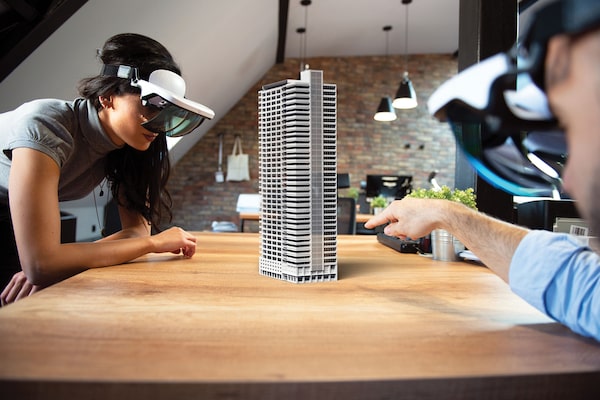
Dr. Martine Spinks, associate dean of Humber College’s Design and Built Environment, Faculty of Applied Sciences and Technology (FAST), says she is proud that FAST has included Humber’s Learning Outcome Framework into the new Bachelor of Engineering (The Built Environment) degree. Key growth mindsets in equity, diversity, inclusivity and Indigenous learning has been embedded in the curriculum.SUPPLIED
Educating students to meet the skills gap that exists today and into the future
The success of the future built environment – our cities, neighbourhoods and the homes we live in – depends on engineers who are creative and capable of combining evolving technology and the ability to collaborate with other professionals in the planning, construction and operation of buildings.
To meet the demand for career-ready engineering graduates, the Humber Institute of Technology and Advanced Learning (Humber College) in Toronto, Ontario, is now offering three new Bachelor of Engineering programs in the disciplines of: The Built Environment; Information Systems Engineering; and Mechatronics.
“There’s a massive digital transformation happening in our world: sustainability in the built environment needs to interconnect with Industry 4.0 – smart digital technology, machine learning and big data – the systems that are changing buildings, built environmental design, logistics, optimization and life cycle,” says Dr. Martine Spinks, associate dean of Humber College’s Design and Built Environment cluster in the Faculty of Applied Sciences and Technology (FAST).
She points out the long life cycle of buildings and their impact on the environment.
“We need to plan not for today, but to educate students for 10 to 20 years from now. We are educating students to meet the skills gap that exists today and into the future,” she says.
“Sustainable design is more than just the end product, but requires a system’s thinking approach to design, construction and operation. The built environment will only be adaptable to future challenges, such as the impacts of climate change, if design engineers integrate working knowledge and practice with consideration of the long-term requirements,” says Dr. Spinks.

Martine Spinks“Sustainable design is more than just the end product, but requires a system’s thinking approach to design, construction and operation.
Associate Dean of Humber College’s Design and Built Environment
That focus on sustainability and preparing engineers to work in multidisciplinary teams is what interested program adviser Matt Humphries, associate principal at Arup Canada, in the eight-semester program.
He says Dr. Spinks and FAST have done a great job of being future focused in developing the curriculum and demonstrating the foresight to consider the evolving demands on the profession.
“What is important to us, and important to the program at Humber, is sustainability – it’s part of why we support the program,” says Mr. Humphries, who notes Arup is committed to achieving a more sustainable future – and looks at all projects and opportunities through the lens of sustainable development to determine how the profession can contribute to its goals.
“There are massive global challenges; we need to come up with solutions, and the solutions aren’t straightforward and will require a nimble approach,” he says, adding he views the next three decades as the “age of the engineer.”
He points out there are many stakeholders in the design of a building – from materials scientists to building operators – and engineers need to work collaboratively with all disciplines.
Mr. Humphries’s support for the Humber degree is also a nod to Arup’s corporate culture that recognizes the value of furthering the engineering profession through education and research.
“A level of comfort with technology is increasingly important, and the capability and skill set that is required is exceptional, but creativity is the biggest and most important attribute for engineers of tomorrow,” he says.
Advertising feature produced by Randall Anthony Communications. The Globe’s editorial department was not involved.